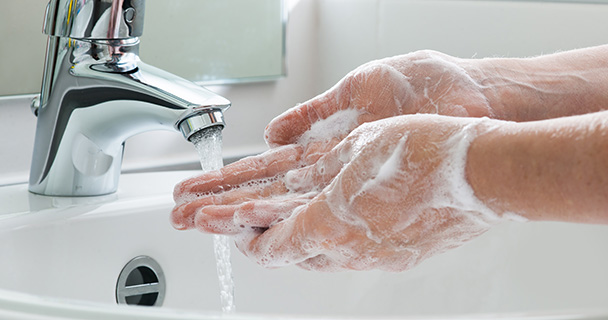






National Handwashing Awareness Week Brings Attention To A Core Infection-Prevention Protocol

"Wash your hands before dinner."
It's something most everyone heard growing up, and with good reason—clean hands are much less likely to spread germs and viruses to everything with which they come into contact. Hence, the importance of National Handwashing Awareness Week.
It's hard to overstate that personal hygiene begins and ends with our hands. And not just before meals, but throughout the day, especially if we are ill ourselves or around sick people. If you're in healthcare, especially in direct contact with patients, it's imperative to maintain a strict hand-hygiene regimen.
Though it sounds complicated, it's anything but. Here are some tips for getting hand cleanliness right:
Be thorough: Wash your hands with soap and clean water for at least 20 seconds. Get a good lather going and clean the back of the hands, between the fingers, and under the nails. Dry them using a clean towel.
Complete Five Steps: The Centers for Disease Control and Prevention calls handwashing "a do-it-yourself vaccine" and suggests five easily remembered steps:
- Wet your hands with clean, running water (warm or cold), turn off the tap, and apply soap.
- Lather your hands by rubbing them together with the soap. Lather the backs of your hands, between your fingers, and under your nails.
- Scrub your hands for at least 20 seconds. Need a timer? Hum the "Happy Birthday" song from beginning to end twice.
- Rinse your hands well under clean, running water.
- Dry your hands using a clean towel or air dry them.
Learn the Four Principles of Hand Awareness: These come by way of the American Medical Association and American Academy of Family Physicians, and include:
Wash your hands when they are dirty and before eating
- Do not cough into hands
- Do not sneeze into hands
- Don't put your fingers in your eyes, nose, or mouth
It's easy to think of handwashing as something that's a good habit, but not all that important when compared to other illness-prevention measures. Easy, but wrong. According to the Centers for Disease Control, handwashing can prevent one in three diarrhea-related illnesses and one in five infections, including the flu. About 1.4 million children under age 5 die from diarrheal diseases and pneumonia—the two most deadly afflictions for children worldwide.
Handwashing supports overall health when done consistently.
Also, it's safe to assume that if you're not mindful of handwashing, neither are the people around you. And the stats back that up: The CDC also reports that only 31 percent of men and 65 percent of women washed their hands after using a public restroom. And consider this: A typical human sneeze exits the body at about 200 miles per hour and emits around 40,000 droplets into the air. So, do you want to shake the hand that just covered a sneeze?
No soap and water? Be prepared.
As a backup, keep some hand sanitizer nearby. It's sold in small, portable dispensers, easy to slip into a purse or briefcase, or clip to a backpack. It should at least 60 percent alcohol. Still, keep in mind that sanitizers do not get rid of all types of germs, may not be as effective when hands are visibly dirty or greasy, and might not remove harmful chemicals from hands like pesticides and heavy metals.
